

In Retrospect: The Artist in His Own Words
Bruce BeasleyWhen I look back on 60 plus years, I realize what a fortunate person I am to be able to spend my life engaged in one of mankind’s oldest endeavors— turning material into human feelings.
I have devoted a career to engaging in the emotional language of shape; I say the emotional language of shape, because that is what sculpture is to me. Geometry is the intellectual language of shape, and sculpture is the emotional language of shape—much the same way that acoustics is the intellectual language of sound, and music is the emotional language of sound.
I found my calling as a sculptor early. It was at Dartmouth College in 1958, and I was 19. I had been pushed by college counselors to pursue a career in rocket engineering. This was based on my having built hot rods in high school, the idea being that a rocket program was the assumed professional extrapolation for a college-bound lad who built race cars; but in truth, I was looking for a path in life for myself.
I had always built things, ever since I was just a kid, and that connection to the manual, and to the work of the hand, was deeply important to me. I had enthusiastically taken shop classes throughout junior and senior high school. These courses were considered “trade track,” even though I was officially on the college track. I saw that the world that I was expected to enter was divided into those who made things and got their hands dirty, but didn’t decide what was made, and those who were educated, wore clean clothes, and didn’t make things, but told others what to make. I didn’t like that separation of the hand and the mind, and it didn’t address another element that was missing: what I call the emotional or spiritual side. I didn’t see a place for myself in that world.
So when I discovered sculpture at 19, it was an absolute epiphany. It was the first time that the three elements of using the hand, the head, and the heart came together in one activity. There was no question about it. That was the path I was going to take.
From the beginning, I realized that I did not previsualize sculptures and I didn’t find that drawing was a way to explore sculptural ideas—it was two-dimensional and lacked the opportunity for real engagement with tangible form. I had to just start working with three-dimensional shapes directly and hope something came of it. At first, I thought that was a serious limitation. But I did find that although I did not previsualize a sculpture and had to play around with shapes to jump-start my creative process, I did have a very strong and almost physical sensation when a composition was “right.” I realized that my way of working was really a process of exploring relationships of various shapes where, along the way, I might “find a sculpture.” I consider it exploring versus preconceived creativity.
From the very beginning, I was interested in exploring arrangements of existing shapes, but I was only interested in the shapes themselves and how they interacted with each other. I was not interested in any context or feeling associated with the original use of the object. That was the genesis of the broken cast iron pieces like Horae, Tree House and Lemures (figs. 1, 2, 3).
It was 1960 and I was at a scrapyard in West Oakland, where I had gone to buy some steel to make a welding table. A large pile of used, cast iron sewer pipe from dismantled houses was being broken up. I had not realized that there was a form of iron that would fracture and break rather than bend. I saw that each of those broken pieces
had two voices. One was its original cast shape, which was curved and controlled, and the other was the broken edge that meandered randomly across the curved shapes. In addition, there was a color difference. The curved cast surfaces were aged and dark, while the broken edges had exposed new iron that rusted to a bright orange. It was as though the dark curved shapes were the base notes and the orange rusty edges were the high notes. Could some visual poetry result from the interplay of these two voices?
Another thing I learned from this early series was that the variety of possible arrangements I had to play around with was greatly enhanced
by virtue of the pieces having been broken. A pile of broken pieces of cast iron pipe had much more potential for me than a pile of unbroken pipe. But along with the visual interest that the cast iron fragments inherently possessed was a downside, in that the thin, fragile cast iron was difficult to weld, limiting the range of possible configurations. But this was the first process of working that had resulted in sculptures that I felt were really mine, so I knew I was on to something.
The first really important exhibition I was in was The Art of Assemblage in 1961 at the Museum of Modern Art in New York. It was important to me for many reasons. This was a seminal exhibition


 Clockwise from top left:
Fig. 1. Bruce Beasley, Horae, 1960. Collection of the artist
Fig. 2. Bruce Beasley, Lemures, 1961. Collection of the artist
Clockwise from top left:
Fig. 1. Bruce Beasley, Horae, 1960. Collection of the artist
Fig. 2. Bruce Beasley, Lemures, 1961. Collection of the artist
Bruce Beasley: In Pursuit of Form
Marlena Doktorczyk-Donohue
In Andrew Mitchell’s compelling Heidegger Among the Sculptors: Body, Space, and the Art of Dwelling, the philosophy professor notes that whenever an artist explores space as a material medium for exchange, one encounters the body’s appearance in a world of spatial relations. At that point, our bodies and our notions of space/ shape are interconnected, and as such our awareness of ourselves becomes participatory and transformative. To paraphrase Heidegger, Beasley’s works invite us to “enter space [and shape] and to communicate and commingle in the physicality of the world.”*
Indeed, the works in this exhibition are in many respects an extension of Beasley’s way of being in the world. The tenacious, methodical, and sensitive solutions the artist brings to community issues are echoed in his work and artistic choices. The content is never readable, for abstraction is the opposite of narrative, but his art reflects his lifelong, creative attitude that balances disciplined precision on the one hand, against an instinctive, insistent humanism on the other.
We see this in Beasley’s artistic process, when after rigorous investigation, followed by a perfectly timed suspension of logic, he is able to intuit when a tangle of arcs becomes a work of art or a crescendo of cubes becomes what the artist Donald Judd called a “specific object”— that rare aesthetic thing which, through the direct experience of form alone, speaks about perception, time, space, and the point between dispersal and resolution.
The sidewalks, streetlights, homes, green spaces, and community in the historically
neglected section of Oakland, California, for which Beasley was directly or indirectly responsible for improving, came into existence by the same laser focus, vivid imagination, and deep emotional understanding that Beasley employs in his art. This aim to elicit complex visual and emotional reactions—none of which the artist intends but which are fortuitous outcomes—while maintaining a faithfulness to form has been a leitmotif for many abstract artists, including Beasley.
Beasley’s powerful sculptures have been exhibited around the world, and he has completed projects for public and private patrons at home and abroad. His works are in the permanent collections of the Museum of Modern Art and Solomon R. Guggenheim Museum in New York; National Museum of Modern Art, Paris; National Art Museum of China; San Francisco Museum of Modern Art; and the Los Angeles County Museum of Art, to name but a few. He has also been commissioned to create and install environmental-scale outdoor works for the cities of Shanghai and Palo Alto, and most recently on the grounds of the University of California, Berkeley, the artist’s alma mater. A few years ago, Beasley was the only non-art historian invited to deliver a lecture at Goethe University in Frankfurt, Germany, on the career and work of his close friend and inspiration, the Spanish Basque abstract sculptor Eduardo Chillida (fig. 25).
Beasley is, as they say, the real deal.
Like every origin story, Beasley’s prefigures his destiny. When he was seven years old, while on a trip with his family, he became fascinated by an abandoned tractor (fig. 26). He was less interested in the object as a piece of machinery than for the way its rusted, disused parts became interlocking shapes and vivid geometries: “Even
then, I could see the complex wholes were comprised from simple ab stract parts, and I became aware that these shapes could invoke in me such a deep, inexplicable feeling of visual pleasure, mystery, joy and more.”
His “inexplicable feeling” as a child became his calling as an adult, when he turned from engineering studies at Dartmouth College to fine art at the University of California, Berkeley. Still in his early 20s, the undergraduate was chosen to exhibit alongside Picasso, Marcel Duchamp, Georges Braque, Marcel Duchamp, Man Ray, Kurt Schwitters, Robert Rauschenberg, and Jasper Johns in the Museum of Modern Art’s noted 1961 Art of Assemblage show. Their work was heralded by critics and historians as a paradigm shift, a loosening of the stranglehold of Abstract Expressionism on the art world and opening the door for Pop, junk sculpture, installation, and other new genres. When asked about the experience, Beasley simply stated: “I thought it was great, for sure, the works in the show were by amazing people I’d read about and admired, but even then, I wasn’t looking for a new trend . . . I was just doing what I have always understood— moving and finding shapes that resonate with me:
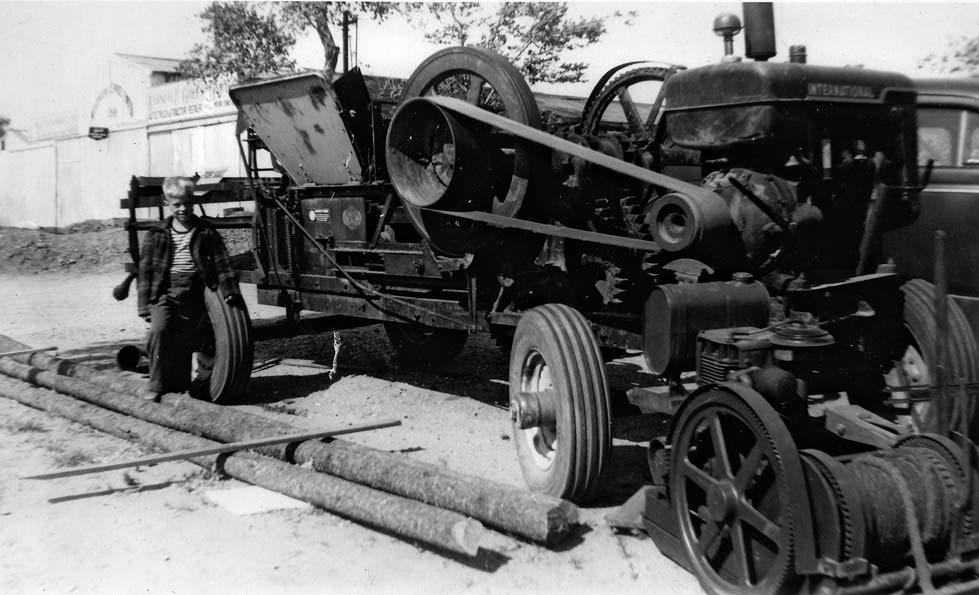
I am basically still doing the same thing all these years later.”
With both rigor and poetry Beasley deploys the laws of physics, the voids and solids of geometry, as well as any and all advanced technologies that let him express himself in highly personal but nonrepresentational ways. His art has indisputable connections to the visual and philosophical traditions of modern and postmodern abstraction, but Beasley does not duplicate it. If he is a modern abstract sculptor, he is a delightfully authentic and individual one who resists easy labeling. As he says,
It is a mistake to make me out as having invented the most dandy or perfect or emotive type of abstraction; that’s just plain not accurate. Abstract imagery has been around since humanoids made cave marks. These are two ways—figures and shapes—with which humans have always expressed themselves. I value and appreciate both ways of making and seeing and they are not in competition, but as an artist, I speak the language of nonnarrative shape most naturally.
In the classical world and during the Renaissance, an artist’s value was equated with
 Fig. 25. Bruce Beasley and Eduardo Chillida, 1998
Fig. 25. Bruce Beasley and Eduardo Chillida, 1998
But For Real: A Conversation with Bruce Beasley on Art and Social Activism
Lawrence Weschler
Heading out to meet the sculptor Bruce Beasley, I’d been planning to talk to him about his conception of the sculptural vocation— what did he mean, precisely, when he described his geometric forms as “calling out” to him as they took shape in the vividly, sometimes almost epically, abstract gestures for which he is widely celebrated. And I was expecting to be doing so in what had once been—and not so long ago—one of the sketchiest, most blighted neighborhoods in the entire East Bay, which is to say West Oakland, wedged up against the teeming docks.
The neighborhood into which I instead alighted—the South Prescott subdistrict—comprised cozy, mostly century-old single-family units, and Beasley’s compound, in particular, situated at the end of a tree-shaded street, was positively Edenic. A well-appointed home designed by the artist, brimming with Indigenous art, and next door, the multi-use workspace that he had purchased for working and living at the beginning of his career, back in 1962. Girdling the two structures, a fragrant garden, in part given over to the spacious display of a career’s worth of Beasley works, and across the street, a huge gleaming studio, also designed by the artist, complete with a bridge crane and expanses of elegant glass for light, all to hold his still prodigious productivity.
When I commented on the exceptional and unexpected beauty of it all, Beasley pulled out a sheaf of photos, to prove to me that it hadn’t always been thus. The images, from when he first moved here in the early 1960s, were more like what I’d been expecting: dismal streets with potholes but no sidewalks, junkyards filled with wrecked cars, derelict houses, empty lots strewn with refuse, and underemployed neighbors.
As we now returned to his home’s airy two-story living room and took our seats, Beasley set about setting the table, as it were, for what he was hoping we’d be talking about: “There is a rather limited way that we define the political artist in our current climate,” he began. “There seems to be a presumption that including overtly political subject matter makes an artist ‘activist,’ and failing to do so suggests a lamentable failure of political responsibility, all of which comes with the corollary idea that merely by engaging political issues art has
the capacity to actually effect social change in some way. And I question all of that. I’m not denying that political art communicates and has a profound place in history—just think of Goya!—but what drew me to social activism fifty years ago was a desire to be part of a project effecting concrete, on-theground results, and I’m not sure that most of what passes for political art today does that.”
He paused before continuing: “I suppose this question comes up for me at this late stage in my life in part because of the heightened character of the discourse around these issues in the art world generally these days, especially on campus, but also because I often wonder what that art world would make of an artist like me who resolutely does not use social issues as subject matter in his artistic production but who has actually practiced social activism in a committed way throughout his working life. Am I then a political artist, an activist artist, or just an engaged citizen who happens to be an artist? I don’t think art discourse and narrow definitions about political artists have investigated this question with any real depth . . . And I’d hoped that we might try to do that today.”
He continued as to how two braided strands—art and activism—had long dovetailed across the length of his own life, though he’d long avoided discussing his history of activism in the context of his art, because he wanted to keep the two distinct from one another. He did not want his community activism to then invite forced politicized narratives of his decidedly abstract work. But on the brink of a 60-year retrospective, he’d come to feel that now might be the time for a discussion of the full breadth of his life as both an artist and a citizen.
Perhaps, I suggested, he might begin with a quick overview of how he’d gotten into art, on the one hand, and activism, on the other, and then, for that matter, into West Oakland, of all places. Well, he recounted, he’d enjoyed a normal childhood in Southern California, but from early on he’d been drawn to the world of the visual and the spatial, in particular. In high school,
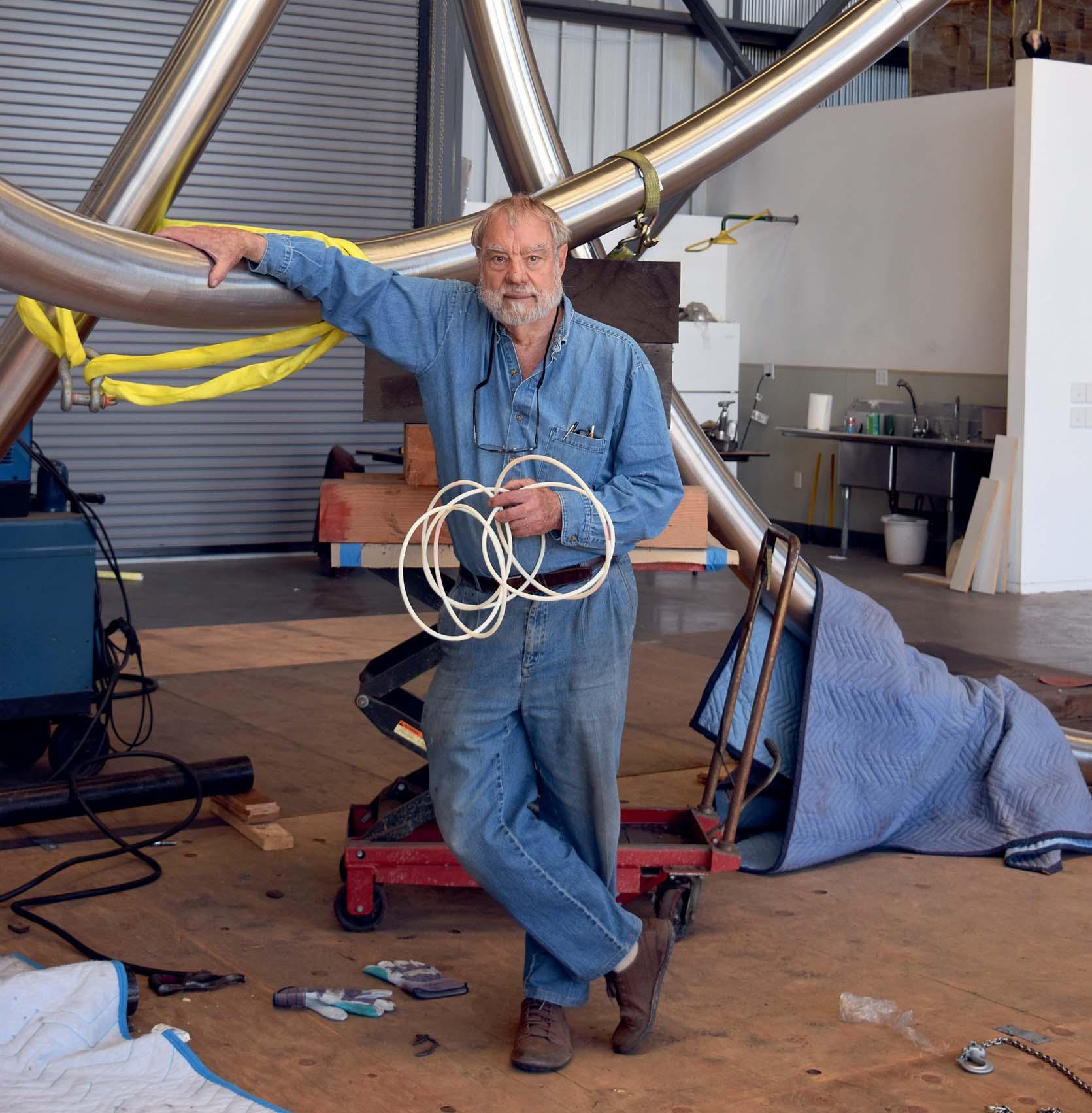
Untitled, 1960


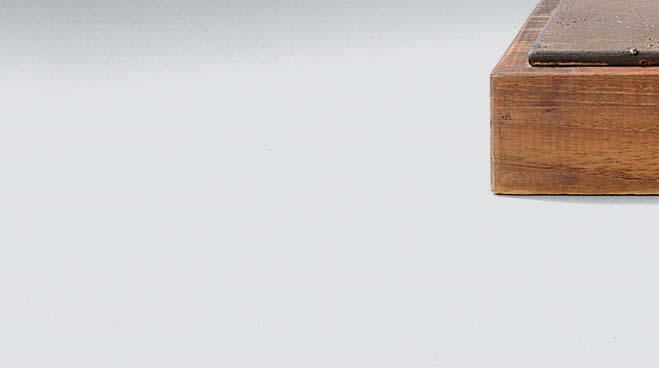





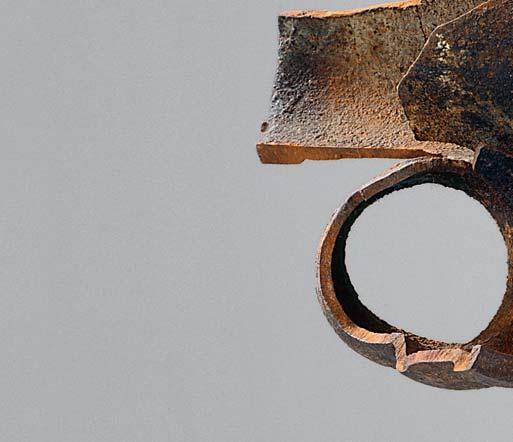




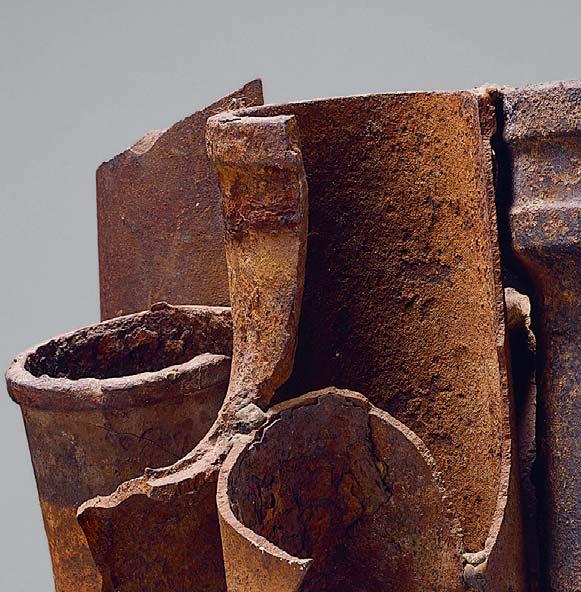



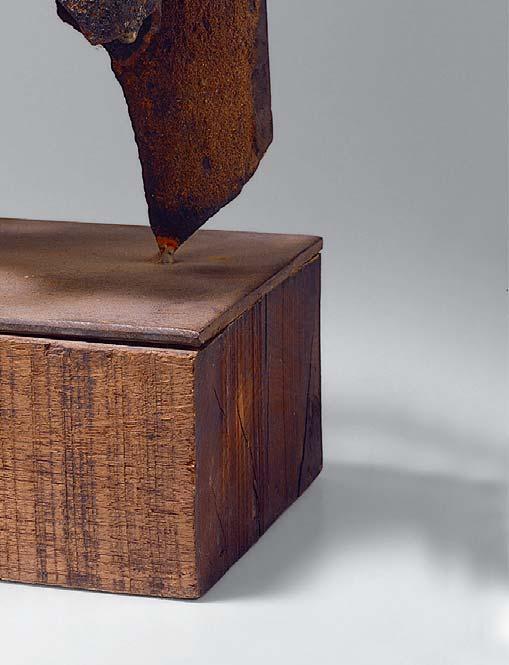




Encounter, 1995










About Grounds For Sculpture
Grounds For Sculpture is a 42-acre sculpture garden and museum, located midway between New York and Philadelphia in Hamilton, New Jersey. Once home to the longrunning New Jersey State Fair, the property was a gathering place for hundreds of thousands of adults and children alike to view exhibits, be entertained, and step outside of their daily routine. Since opening in 1992, more than a quarter of a million people are welcomed annually to Grounds For Sculpture to view world-class art in a spectacular landscape, to enjoy entertainment and fine dining, and to nourish their creative lives through interaction with living artists and artmaking.
Grounds For Sculpture combines art and beckoning spaces to welcome, surprise, and engage all visitors in the artist’s act of invention. Founder and artist Seward Johnson envisioned Grounds For Sculpture as a “space where the broadest cross section of the public is invited to relate to sculptural arts and nature in an emotional way and encouraged to overcome any natural, habitual, or learned resistance or fear of art, for an experience that elevates the soul and heals the spirit.”
More than 300 sculptures from the collection are exhibited yearround across the grounds, with additional works placed throughout
the community. The collection includes works by Magdalena Abakanowicz, Anthony Caro, Willie Cole, Joyce J. Scott, Toshiko Takaezu, Beverly Pepper, Kiki Smith, George Segal, and Isaac Witkin, among others. Works displayed outdoors are situated among a living collection of botanical specimens, including thousands of native and exotic trees and flowers, a 7-acre wildflower meadow, and an outstanding assortment of deciduous and evergreen conifers. At Grounds For Sculpture, we invite a diverse public to create, learn, and discover personal meaning in their interactions with art, artists, nature, and one another. More than 700 artists have had opportunities to share their work through exhibitions at Grounds For Sculpture, participating in rotating exhibitions both indoors and throughout the gardens. The exhibition of Bruce Beasley: Sixty Year Retrospective, 1960–2020 continues this commitment to present the works of contemporary sculptors, and we believe that through sharing the work of contemporary artists, we can reflect the greater world, challenge perceptions, and inspire.





